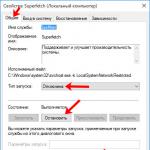Mosaic tiles can add sophistication and originality to even the most nondescript and conservative interior. This material has gained popularity among consumers and is in demand along with other facing materials. Mosaic laying works are more expensive and significantly increase the repair budget. With the advent of mini-tiles on the grid, laying technology has become easier, and it will be possible to implement the intended design project on your own.
Mosaic tiles: the benefits of laying
Mosaic tiles are a popular type of facing material, widely used for decorating bathrooms, saunas, swimming pools, kitchens, living rooms and facades. Mosaic is a decorative composition of many small glass, ceramic, mica elements. All parts are fastened on an elastic mesh, forming a flexible finishing material.

Installing mosaic tiles is a modern, original and stylish interior design solution that allows you to realize various design ideas. Before making the final choice in favor of the mosaic, you should familiarize yourself with the features of the cladding:
- Small tiles are made from materials that are resistant to high humidity and temperature fluctuations. High wear resistance allows the use of mosaic decor in public places.
- Mosaic trim has similar characteristics to tiled cladding: strength and durability. The aesthetic and attractive appearance of the product is maintained for a long time.
- Possibility of mounting on surfaces of various configurations: rounded niches and bath screens. The mosaic panel is easy to cut into pieces of the desired shape - this simplifies laying in hard-to-reach places.
- A large assortment of mosaics allows you to create any decorative panel, an interesting pattern or ornament.
Among the disadvantages of mosaic decoration include:
- high cost of the material;
- more complex installation compared to laying conventional ceramic tiles;
- high-quality mosaic laying requires careful preparation of the base.

The advantages of facing with mosaic tiles exceed its disadvantages. It is better to entrust the laying of a wall or a panel of small mosaics to a professional. In order not to overpay for the work of an experienced master, you can select a small accent zone and lay out a strip of mosaic yourself.
Features of different types of mosaic tiles
Based on the materials of manufacture, the following types of mosaics are distinguished:
- Stone. Tiles are made of quartz, marble, granite, slate or travertine. This material is highly durable, so it is used not only for wall decoration, but also for floors. Stone mosaic has a natural aesthetics, gives the room a special style. Some manufacturers offer exclusive collections of malachite or agate.
- Glass. Ideal for surfaces exposed to moisture. However, the material is less resistant to impacts and scratches, so it is not recommended for laying on floors or finishing countertops. Glass mosaic with a translucent structure must be attached to a special adhesive.
- Ceramic. Expensive material, suitable for finishing any area of \u200b\u200bthe house. The mosaic is covered with a glossy glaze or remains matte. Laying ceramic mini-tiles allows you to get a relief non-slip surface. Ceramics is resistant to mechanical damage and abrasive compositions of detergents.

According to the method of application, a mosaic is distinguished on paper and on a stack. The first option - the tile is covered with a paper base on the front side. After installation, the paper is removed.
The second option - the mosaic elements on the reverse side are connected by a mesh, which is applied to the adhesive solution. This mosaic is easier to install.
Mosaic tile mesh comes in different types. The most durable and easy to install - polyurethane. They adhere securely to the mosaic and are suitable for installation in damp environments. A cheaper option is products on a gauze mesh. They can be used in areas with low traffic. In high-traffic areas, tiles on a fabric base will quickly become loose and may fall off.
Important! Before buying, you need to make sure that the mesh is firmly fixed on the mini-tile. Even with sagging, the mosaic should not “depart” from the base. During the laying of a defective product, problems may arise - the mosaic will not lay down evenly and the pattern may move.
Foundation Requirements
Mosaic is laid on a flat, smooth base. If this requirement is neglected, then the mesh flexible fabric will repeat all the protrusions and the result will turn out to be “embossed”.

Surface preparation before laying involves the following activities:
- Check the evenness of the coating. Minor differences in coating can be corrected with the thickness of the adhesive. However, this method does not always work. Optimum - preliminary plastering and grouting of the surface. With significant differences in the base, it is better to level it using sheets of moisture-resistant drywall.
- Clean the surface. Before installing mosaic tiles, it is necessary to remove dirt and dust. The remains of the plaster after grouting must be collected with a vacuum cleaner, and the coating should be wiped with a clean rag.
- Prime the base - this will improve the adhesive characteristics of the materials and completely rid the surface of dust. Deep penetration formulations are optimally suited for work.
The choice of adhesive for laying mosaic tiles
To perform the installation, it is necessary to choose the right adhesive for mosaic tiles. Three types of adhesive are acceptable:
- dispersion one-component;
- adhesive based on cement of a rigid or elastic composition;
- reactive adhesive solution, consisting of 2 components (base and hardener).

When buying glue, you must take into account the type of mosaic tiles, the nature of the surface and the room. Recommendations for choosing an adhesive composition based on the tile material:
- Ceramic products - cement glue of white, gray color. For lining a deformable or non-absorbent substrate, an elastic compound should be used; for finishing a stable mineral substrate, any tile adhesive will do.
- A natural stone. Marble is sensitive to moisture and can change color with prolonged contact, so this mosaic is fixed with a quick-hardening cement mortar or reactive adhesive.
- Glass mosaic. A prerequisite is the white color of the adhesive solution. It can be a cement or polyurethane composition. To finish the pool, bath or shower, add a plasticizer (liquid latex) to the glue. This component will provide the necessary waterproofing of the base. Finishing can be done with epoxy glue.
Important! When lining a swimming pool or bathroom, it is necessary to allow the adhesive to stand for at least two weeks after laying the mosaic. After this period, the container can be filled with water. Finishing work should be carried out at an air temperature of at least + 5 ° C.
Mosaic installation step by step
Marking the tiled base
First you need to make a “dry” layout of the mosaic and mark the base. This is necessary to accurately determine the location of the elements and make sure the color matches. If the layout step is missed, then in the process of work it may turn out that there is a canvas of a different color or format in the batch.

Having laid out the intended pattern on the surface, the parts of the tile must be fixed with adhesive tape and the canvases numbered - this will facilitate the further assembly of the ornament. Following the completed layout, a sketch is created. When developing a drawing of a mosaic tile, some nuances must be taken into account:
- It is desirable to lay out the picture from the most illuminated area or from the center of the image. The tile will have to be cut, so the tiles should be located along the edges or in the inner corners - in inconspicuous parts.
- If there are external corners, the layout of the pattern begins with them. The priority element for starting work is any decorative element of the room: a panel, a mirror, a niche.
After laying out, numbering and creating a detailed sketch, the mosaic sheets must be carefully folded back into the boxes. On the wall or on the floor, it is necessary to mark the boundaries of the location of the mosaic canvas - a laser ruler is optimal for this.
Preparation of tools and glue kneading
Mosaic tile installation kit includes:
- moisture resistant primer with antifungal effect;
- adhesive composition;
- grout;
- rubberized spatula for leveling and pressing plates;
- notched trowel;
- roller for priming the surface;
- construction mixer for uniform mixing of glue;
- container for preparing glue.

Mixing is carried out according to the manufacturer's instructions. In this case, you must adhere to some rules:
- first, the container is poured with water, and then the dry mixture is added;
- the solution is mixed twice with an interval of 5 minutes;
- the duration of one batch with a mixer is 1 minute at medium speed; Increasing the mixing speed and time may cause the adhesive to thin out.
Laying finishing material
The sequence of laying mosaic tiles:
- Apply the adhesive solution to the prepared surface with a notched trowel - grooves should form. At one time it is necessary to cover the area, which will turn out to be lined for half an hour.
- Attach the mosaic sheet to the base with the grid down and press it down a little. To evenly distribute the adhesive, the surface can be rolled with a roller. It is necessary to ensure that the distance between the squares remains the same, and the glue does not penetrate the front of the mosaic. To keep the gaps between the elements at the same level, you need to use crosses.
- Carefully remove the film and leave the glue to dry for one to two days. Excess adhesive solution must be removed half an hour after fixing the mosaic - it will be difficult to clean the tile later.

Important! Walking on freshly laid tiles is not allowed. Loads are permissible only after the final drying and fixing of the mosaic.
Grout "mosaic" seams
The order of grouting seams:
- Prepare grout according to package instructions.
- For the convenience of cleaning tiles from traces of grouting, it is advisable to pre-treat the surface with protective sprays. After 20-30 minutes, you can start mashing the seams.
- Put grout on the spatula and with wide movements, moving diagonally, fill the seams. The spatula should be slightly pressed down so that the grout is slightly below the level of the mosaic.
- The solution must be slightly moistened so that it is saturated with water and does not crack. You can use a damp sponge or a small spray bottle to water the flowers.
- After 20 minutes, when the solution hardens a little, the excess of the mixture must be removed by rubbing a damp hard sponge over the coating. The remains of stubborn cement dust can be removed with a 5% sulfuric acid solution.
- Rinse the mosaic with clean water.

Advice. Marble mosaic requires special care when rubbing the seams. The stone has pores into which the mortar can penetrate and change the color of the tile.
- It is advisable to periodically treat the mosaic coating in the bathroom with special fungicidal agents. This must be done if ventilation does not cope with its task. High humidity can cause mold and mildew to grow on the walls.
- For cleaning, it is advisable to choose gel-like detergents without abrasive components.
- Contaminated areas of the panel can be wiped with a soft sponge dipped in soapy water. When finished, rinse with water and wipe dry.
- The surface of the mosaic must not be rubbed with oily substances, products with phosphoric acid and wax.

Mosaic tiles in the interior: photo ideas
Fireplace screen decoration with silver mosaic. The surface shimmers and shimmers under the glare of fire, creating the illusion of movement.

Facing the walls and ceiling in the bathroom is a common method for decorating the “wet” zone of an apartment and house.

Mosaic is increasingly being used to design a working apron in the kitchen. This solution gives sophistication and respectability to the traditional interior.

Mosaic tabletop is a bright accent in the interior of the kitchen, living room or bathroom.

Laying mosaic tiles: video
When decorating a kitchen or bathroom, mosaic tiles are often used, it consists of small fragments and allows you to create an interesting interior design. If you plan to work with such material, consider some of its characteristics. Let's take a closer look at the sticker rules.
Easy installation thanks to the base
Material Features
Mosaic is a separate type of cladding, which is small elements, often 1x1 cm in size. The seams between them must be the same to create the feeling of a whole picture. In this case, several small elements are assembled into larger ones, connected by paper or mesh.
The last option is radically different. In this case, the material is fixed with the reverse side on the adhesive solution, that is, in the already final position.
It is much easier to maintain an equal distance between the mesh mosaic fragments, since they are pre-fixed to the base.
There are two types of material:
- ceramic. Available in matte or glazed. Has a more massive look. Less whimsical regarding the choice of styling products.
- glass. It looks spectacular, has a translucent structure. It is important to choose the right glue and grout for it.

Varieties of tiles for decoration
Surface preparation
Before laying the mosaic on the grid, it is necessary to process the base. This type of cladding is subject to more stringent requirements than conventional tiles.
The surface to be coated must meet the following conditions:
- evenness. This is perhaps the main rule. The plane must be perfect. The mosaic is able to take on any level differences, this is due to its small size, in this case even applying a thick layer of glue will not help. The surface is carefully plastered and rubbed. If the distortions are significant, it is better to build a drywall base.
- Purity. Before further work, it is important to get rid of dust and dirt. This is especially true if you sanded the surface after plastering.
- Primer. To finally get rid of dust and increase the adhesive properties of the base material, it is recommended to carefully prime the surface. For this, deep penetration compositions are selected.
Only after carrying out the above manipulations, they begin to apply glue to the base and lay the mosaic.

Mandatory condition - leveling the surface
Adhesive solution
The next important point concerns the choice of adhesive for laying mosaic tiles on the grid. In some respects, the question is key; the final type of cladding depends on the choice of composition. The following options are possible:
- Homemade mortar. For its manufacture, cement, fine sand without impurities and water are used. All ingredients are mixed to the desired consistency. Keep in mind that such a composition does not always fit the mosaic.
- Standard tile adhesive. This is a mixture of Portland cement and sand with modifying additives, used in laying tiles on familiar surfaces. Since it is gray in color, this option is only suitable for mounting opaque tiles.
- polymer adhesive. It is based on special components that harden when dried and securely hold the lining on the surface of the base.
- white glue. The same cement mixture as the standard grey, but with components that retain the white color of the mortar, which is especially important when laying glass mosaics.

Varieties of tile adhesive
Keep in mind that specific options are also possible, for example, when finishing drywall or a wooden surface. Glue is selected individually in each case.
Laying technology
To better understand how to properly glue the mosaic on the grid with your own hands, let's take a closer look at the process technology. First of all, let's decompose the mosaic fragments in the order planned by the drawing. For ease of subsequent installation, number them.
Laying starts from the bottom. First, apply glue to the primed and dried surface. A small layer is required. Smooth it out with a notched trowel.
To fix a fragment of a mesh mosaic, take it in your hands and bring it to the surface treated with glue. Set it in the position as planned by the scheme and gently lean against the solution.

Laying the mosaic on the grid
Do not press the tiles with your hands so as not to disturb the evenness of the base. For this purpose, use a flat spatula made of soft material or a large sponge - smooth the surface evenly.
Check each row by level. The grid goes deeper into the solution, but the mosaic fragments remain above it. Do not forget about uniform gaps at the seams.
Final processing
Upon completion of laying, the surface is cleaned of the remnants of the adhesive solution and allowed to dry slightly. Then proceed to the final surface treatment.

Final finishing step
The following mixtures are used for grouting joints:
- Cement fugue. Based on Portland cement containing modifying components.
- Latex grout. It contains latex particles to improve the properties of the mixture.
- Epoxy resin. Durable waterproof material.
- Liquid glass. Transparent viscous mass, hardening in air.
Some mastics contain glitter, this option is great for decorating glass mosaics. Knowing the laying rules, you can easily create a unique interior in the bathroom, lay out the walls and floor in the pool or home sauna, or design a kitchen backsplash.
A bathroom, toilet or kitchen, finished with mosaic tiles, look very beautiful. Unlike ordinary tiles, mosaic tiles can be laid on a surface that has rounded curves. For this reason, circular pools, columns, shower trays and jacuzzi bowls are often decorated with mosaics. If you also decide to use mosaic tiles for wall and floor decoration and want to glue it yourself, be sure to read this article to the end.
Mosaic tiles consist of a certain number of elements fixed on a plastic mesh or paper. The elements that make up the tile are mostly square in shape, but can also be triangular, round, rectangular, and so on. Mosaic tiles, depending on the material of manufacture, are divided into three main types:

- Ceramic tiles - the elements are made according to the technology of manufacturing tiles.
This type of tile is used for wall decoration, ideal for combination with ordinary tiles.
- Ceramic tiles - the elements are made according to the technology of manufacturing tiles.

- Stone tiles - consists of elements made of marble, travertine and tuff. Stone tiles are used, most often for flooring, due to the high wear resistance of the material.

- Smalt tile - made of opaque opaque glass. During the manufacturing process, various elements are added to the glass to achieve unique shades.

- Iron tile is a rather rare type of tile, so it is not often used for decoration. Iron tiles are made of steel or brass.

- Wooden tiles - made from hardwoods, as well as from bamboo and coconut.
In addition to the above types, combined types of mosaics are also made, for example, tiles made of smalt and stone elements are very common.
Mosaic tile gluing
To make an independent decoration with mosaic tiles is not as difficult as it might seem at first glance. You only need to know which tools to use and follow the instructions below.
Tools for the job
Regardless of where you will stick the tiles, you will need:
- Spatula with a smooth edge.
- Spatula with serrated edge.
- Rubber spatula for grouting.
- Rubber small.
- Drill with a nozzle for mixing mixtures.
- Construction knife.
- Level.
- Rag to remove dirt from tiles.
- Plastic crosses for seams.

Adhesive selection
Each type of mosaic tile has its own adhesive. Let's figure out which glue, for which type of tile is best suited:

- Adhesive for ceramic tiles. For tiles with ceramic elements, any cement-based adhesive can be used. Since ceramic tiles have an opaque structure, the color of the adhesive can be either gray or white or transparent. When sticking ceramic tiles, the type of substrate plays an important role. If you need to glue tiles on concrete, plaster or cement screed, then you can use any tile adhesive. If the tiles are glued onto the “warm floor” system, waterproofing or old tiles, then in this case it is better to use an elastic adhesive, for example, “Superflex R77” or “Litoflex K80 Eco”.

- Adhesive for glass tiles. Through the smalt tile elements, which have a transparent or translucent structure, the surface and color of the adhesive on which they are glued are very clearly visible. For this reason, experts recommend using only white glue for glass tiles. The exception is opaque smalt tiles, for which gray glue is also suitable. Popular brands of white cement based glue are Flexbond bianco or Litoplus K55.

- Adhesive for stone tiles. Some types of stone, from prolonged contact with water, are able to change their color. Therefore, for laying stone mosaics, it is better to use a quick-hardening cement-based adhesive - Litostone R98 or Litostone R99. Also, for water-sensitive rocks, reactive polyurethane adhesive - "Litoelastic" is suitable.

When gluing tiles on the walls of the pool or on other surfaces that are actively in contact with water, higher requirements are placed on the quality of the adhesive. Since tiles in the pool or in the shower are glued onto waterproofing, it is necessary to use an adhesive with maximum wettability and elasticity. To achieve such properties, liquid latex is added to the adhesive, for example, "Latexkol - m". The additive is mixed with water and added to the cement mortar, or completely replaces water. Cement adhesives containing polymers are also commercially available for converting water into latex, for example, H40 Tenaflex Eco.
Any flexible adhesive can be used for gluing mesh-based tiles in a swimming pool or bathroom. Since the tile fragments are fastened with a mesh, when cleaning the seams, the mosaic elements are less prone to falling out. But keep in mind that in pools it is recommended to use mosaics on a paper backing, only in this case the maximum contact of the mosaic with tile adhesive is achieved.
The choice of grout for joints
There are two types of grout that can be used for mosaic tiles:

- cement mastic- is a cement mixture diluted with latex or water. Cement-based mastic has a meager palette of colors. It is poorly resistant to moisture and chemicals. However, the big advantage of this grout is its affordable price, which is important when the mixture is consumed at a high rate when working with mosaic tiles. If you decide to purchase a cement mastic, then the best option would be a grout diluted with a latex plasticizer, it is more resistant to moisture.

- Epoxy mastic- Made from epoxy resin. Epoxy mastic has very good performance characteristics, it is resistant to water, has increased strength, can be transparent or dyed in various colors, which makes it suitable for almost all types of mosaic tiles. The main disadvantage of epoxy mastic is the high price.
Mosaic tiles on walls
Unlike ordinary tiles, mosaic tiles require a perfectly even base. Therefore, before proceeding with gluing, level the surface of the walls with plaster. Treat the leveled surface with a primer for better adhesion of the adhesive to the base. Check the evenness of the walls with a level and if everything is in order, proceed with gluing the tiles:


- Dilute tile adhesive according to instructions. Use a drill with a nozzle and a bucket to mix the glue.
- Apply the adhesive to the wall with an ordinary smooth spatula on an area that allows you to stick 3-4 tiles.
- Run a notched trowel over the glue layer to create grooves.
- Glue the first sheet of tile and lightly press it with a rubber mallet over the entire area.
- Glue the second sheet of tiles and separate it from the first sheet with plastic crosses.
- Stick the remaining sheets, mounting the tiles in rows and moving from bottom to top. Do not forget to separate the tiles with crosses to properly maintain the distance between the seams.
- Remove excess adhesive from the joints, leaving room for the grout.
- If it is necessary to cut the tile, cut it with a construction knife along the seam.
- After finishing gluing, wipe the tile with a cloth and remove any remaining adhesive.
- After the glue has dried, start grouting the seams.
- Dilute the grout according to the instructions.
- Apply the mixture to the tiles and spread it over the surface with a rubber spatula.
- When the grout dries a little, wipe the tile with a damp cloth and remove excess grout.
In the process of gluing tiles, be sure to check the evenness of the surface of the coating with a level.
A more visual instruction for laying mosaic tiles on the walls is in the video:
Mosaic tiles on the floor
For laying mosaics on the floor, it is better to use tiles made of durable materials such as stone, marble or porcelain stoneware. Also, for laying mosaics on the floor, it is recommended to use tiles consisting of larger fragments. If laying tiles on the floor takes place in the bathroom, then it is better to use an epoxy-based adhesive because it is more resistant to water. 
Prepare the base, make a cement screed and lay a layer of waterproofing, then do the following:
- Make markings for sheets of tiles. Lay out from the center of the room.
- Dilute the epoxy.
- Apply the adhesive to the surface and spread it evenly with a notched trowel.
- Based on the markings, lay the first sheet of tiles on the floor and press it down with a rubber trowel.
- Install the second sheet of tiles in the same way.
- Check the evenness of the sheets with a level.
- Continue gluing the tiles according to the markup. Remove excess glue from the seams in a timely manner.
- Once you have finished laying the tiles, let the adhesive dry completely.
- Dilute the grout mixture.
- Spread the mixture over the surface of the tiles, filling the seams between the fragments with it.
- After finishing grouting, wash the floor from the grout mixture.
Also, you can watch the secrets of laying mosaic tiles in the video:
Sticking on rounded surfaces and corners
Due to its design, mosaic tiles fit perfectly on curved surfaces. The process of sticking tiles on a rounded surface is not much different from mounting on walls or on the floor. But some features that the master needs to know still exist and lies in the fact that the smoother the bend, the better the tile will look. If the external curvature of the surface is too strong, it is possible to install tiles, but the surface will be ribbed. Also, with a strong internal bend, the distance between the fragments is violated in the tile sheet.
So if you are designing the shape of the walls or the pool yourself, avoid sharp bends. 
As for gluing mosaics in the corners, it is no different from installing ordinary tiles. For internal and external corner joints, the tile must be cut at the seam. If the seam of the tile does not match the angle, then in this case you will have to cut the tile fragments using a glass cutter or grinder. 
How to stick mosaic tiles on a rounded surface and how to cut fragments can be seen in the video:
Mosaic design options
In order to awaken your imagination and help with the choice of design for the bathroom, we offer you options for finishing with various types of mosaics:

- Bathroom with red smalt tiles.

- A combination of different types of mosaic tiles.

- Bathroom, finished with ceramic mosaics with large fragments.

- Mosaic tiles in combination with ordinary tiles.

- Bathroom with smooth curves under the mosaic.

- Kitchen apron made of mosaic tiles.

- Mosaic tiles with a common pattern throughout the wall.

- Mosaic tabletop.

- Mosaic curved pool steps.
As you can see, with the help of mosaic tiles, you can create a unique design in the bathroom, kitchen or pool, while not making extra effort.
We hope that our article was useful for you!
Modern technologies have gone far from the times when the decor and decoration of various areas of the interior was a laborious and very complex process. Today, you can decorate the walls in the bathroom or in the kitchen in a matter of days, with a minimum of effort. If you see a cute small ornament in the future design of your home, then choose a mosaic. The technology of arranging miniature squares on a grid allows you to glue large fragments at once, rather than individual elements. To get a beautiful drawing or a special panel, it is important to know the basic rules for tiling with small tiles.
Material Features
Small squares (on average, this is 1x1 cm in size) located at a right angle - this is the mosaic. In the manufacture of tiles, they are placed on a mesh lining, forming a large square or rectangle. The main feature of this material is that it is quite flexible and suitable for the design of relief walls, corners, bends or mini parapets. In addition, whole canvases are easy to combine with each other. Using the right adhesive and grout, you can achieve excellent results.
Subtleties and features of the process: laying mosaic tiles

The special but simple process of laying a new mosaic tile begins with surface preparation. The main stages of preparation:
- Cleansing. The walls are cleaned from the previous coating. It is necessary to remove a layer of old tiles, paint, wallpaper or other facing material to the rest. In new housing, it is enough to clean the surface of dust and construction debris.
- Leveling the surface before laying. It is necessary to replace the layer of plaster, leveling the walls. If the level differences are too noticeable, then drywall sheets are fixed.
- Use a special solution (a primer with a special deep penetration composition) for better adhesion of the adhesive mixture. The final surface after processing should be sufficiently rough and completely dry.
It is important to have a ready-made design project that takes into account the location of plumbing, lighting and decor. General data will help to correctly calculate the required number of mosaic elements and consumables.
Which mosaic tiles to choose?

Mosaic cladding is not a new word in repair. This method has been known since ancient Rome. But now small elements are collected on a grid, with which you can quickly glue a large area. Affordable cost, high operational and aesthetic properties make the mosaic on the grid more and more in demand. To choose the type of tile you need to consider:
- type of room (kitchen, bathroom, pool, shower, etc.);
- location (use outside or inside);
- creating a general background or section (for example, a decorative panel).
Modern production of cladding offers customers a large selection of tiles on a grid made from various raw materials. Each type has its own set of advantages:
- Ceramic is glossy (coated with glaze) and matte. By its properties, it is similar to a standard tile. It is often used because ceramics are unpretentious in care and have a high level of resistance to moisture and heat. Ceramic cloth on the grid is easy to glue, the simplest adhesive mixture is suitable for it.
- Glass is less popular due to the higher price. But the base of transparent and colored glass creates an incredible effect. When laying, such a coating requires a special solution that will not spoil the shade of the mosaic. When caring for glass elements, do not use harsh abrasive products that can spoil the appearance (must be protected from scuffs and scratches).
- Metal tiles are made of stainless steel or aluminum, which are great for modern and high-tech style. Its price is higher than the previous ones, but it also looks much more interesting. Strict metal squares cannot be placed on an uneven surface, otherwise the whole effect will be lost. It is also important for this material to choose a special type of grout and glue.
- Natural stone is chosen for an eco-style interior. A panel of such elements with a natural plot is especially impressive. The standard solution is perfectly combined with natural ingredients.
When it comes to tile joints, it is important to consider not only the composition, but also the color of the grout. It can be a contrast of shades to create the depth of the seams, or vice versa, a tone-on-tone match that visually expands the space. Glitter special mixes are a great alternative to glass base grout.
How to choose a quality adhesive solution?

The composition of the adhesive base must be ideally combined with the facing material. Therefore, the main criterion for choosing is the type of material from which small elements are made.
cement-based mixture
The standard composition of tile adhesive includes 5 parts of cement, 1 part of sand and another 10% (of the total mass) of plasticizer. The last component is lime milk or washing powder, which perfectly combines bulk substances. Such a mixture can be dark gray or white. It is not recommended for use under glass or metal tiles and should not be applied over drywall.
Adhesive from polymer components
If laying tiles is planned in an area with a high level of moisture (bathroom, pool, sauna, bath), then choose an acrylic-based mixture. Polymer components have high quality properties: they dry very quickly, after hardening they become like a stone or a very dense plastic. In addition, paint can be added to the mixture and any shade can be obtained. The acrylic mixture does not need to be prepared, but only stirred. The price for such properties is high.
Epoxy adhesive
A worthy competitor to acrylic styling mix is epoxy mix. The finished substance includes epoxy powder or resin and a special hardener liquid. The two-component composition creates a strong, dense and at the same time transparent, like glass, base. Any type of tile can be glued on it. This is an expensive product, but it surpasses other mixtures in its exceptional properties. It securely fixes the tile in any area and it will not be easy to remove such a cladding during subsequent repairs.
Laying mosaic tiles on a grid

Materials and equipment
- Choose in advance the type of mosaic according to the interior design project and buy it in sufficient quantity (based on the calculation table of the coverage area).
- Pick up glue from a range of ready-made or cook it yourself.
- Stock up on a primer (liquid for impregnating plaster under glue).
- Buy two types of spatula - wide and notched.
- Prepare a container for the solution.
- To roll the canvases, you will need a rubber roller (or silicone), you can also use a trowel or a rubber grater.
- A container of clean water and absorbent towels for cleaning.
- Roulette, building level, laser for marking, pencil and meter ruler.
Surface preparation and marking
- determine the number of whole sheets (start counting from above so that the cut fragments are in the area near the floor);
- create a bottom horizontal border from which you can start gluing large fragments;
- all parallel straight lines during laying must be adjusted using the center line and checked with a level so that the whole pattern does not move out at an angle.
How to glue mosaic on the wall

The nuances of laying are fraught with simple rules, adhering to which it is really possible to get a high quality result. Before gluing fragments, you need to build a clear algorithm of actions:
- primed the plastered surface and allow to dry;
- make accurate markings, taking into account all angles, bends and the location of plumbing;
- start gluing the sheets.
Determine the largest areas and those surfaces that come into view first. From them you need to start gluing fragments of the mosaic. When gluing, move from the bottom up, from the middle to the corners. You do not need planks, as when laying ordinary tiles. After all, the mosaic tile is lighter, besides, its elements are fixed by the grid, which means that it will not move out. To ensure that the sheets lie evenly, do not press or dent them. It can only be fixed with a roller.
Laying algorithm
- Apply a mixture of glue evenly on the surface, distributing the material with wave-like movements (it is recommended to apply liquid glue to the coverage area of 5-10 canvases).
- Apply a thin layer of adhesive mixture to the grid.
- Lay the canvas relative to the vertical and horizontal lines.
- Go over the sheet with a rubber roller to secure.
- After laying each row, check the parallels with a level (bubble or laser).
Mosaic jointing

The final stage of laying mosaic sheets is jointing or applying a layer of grout. This is required to protect the inter-tile space from moisture ingress, preventing the destruction of the lower layer. And also creates an aesthetic view of the completeness of the decor. When applying a grout mixture, it is important to take into account the difference in cell depth between individual elements and whole sheets. Excess grout can be easily removed with soapy water.
Mosaic on the building grid is a good option for a quick, beautiful and durable repair. See the TILE FROM THE FACTORY website for many options for design solutions. We also invite you to visit the comfortable Kerama Marazzi store in Moscow on Budyonny Ave., 27.


















